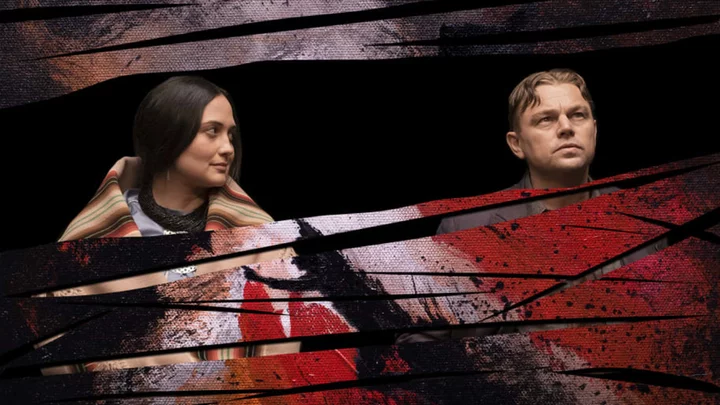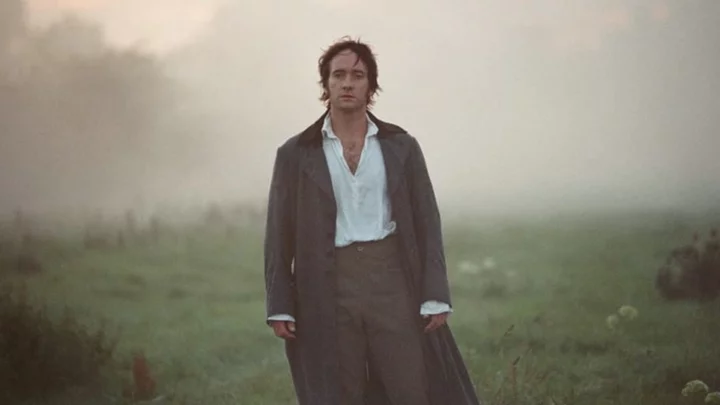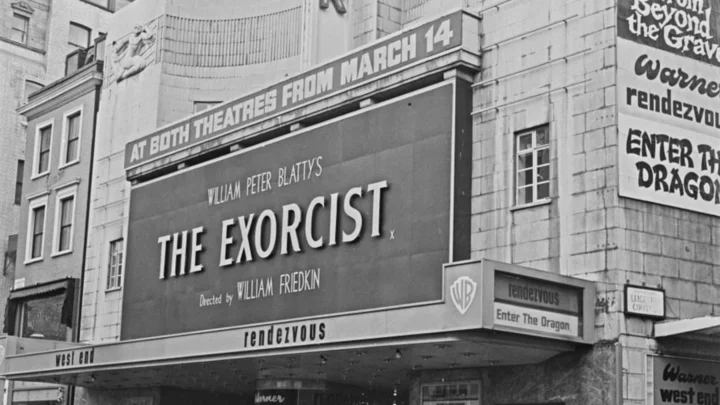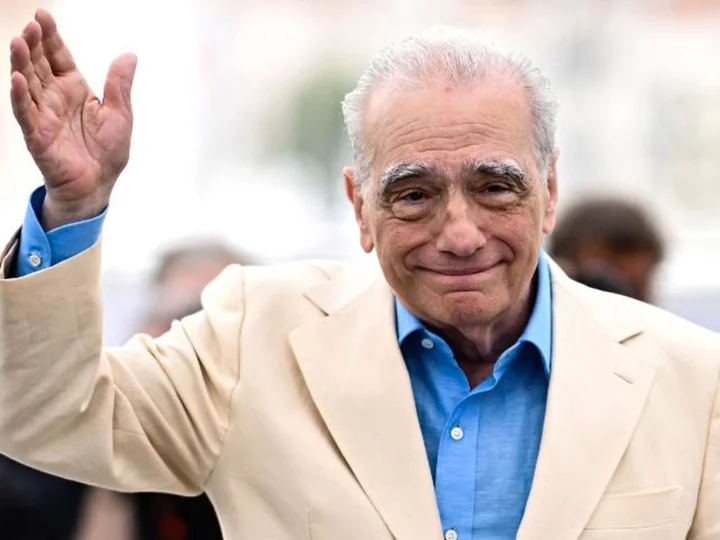In late May of 1921, 34-year-old Mollie Burkhart was summoned to a ravine on the Osage reservation where she lived. A body had been found there, Mollie was told. Could she identify it?
She could: It was Mollie’s older sister, Anna Brown, who’d gone missing a week earlier. A bullet hole now marked the back of Anna’s skull.
Anna wasn’t the first family member Mollie had recently lost, and she wouldn’t be the last. In the 1920s, death ripped through the oil-rich Osage Nation at a shocking rate. Some cases seemed accidental, while others, like Anna’s, clearly weren’t. It would take the help of a nascent FBI to finally expose the orchestrator behind this years-long “reign of terror.”
The story of the Osage murders is one of greed, betrayal, and moral rot at the heart of white America. It’s also the inspiration for Martin Scorsese’s Killers of the Flower Moon, based on David Grann’s 2017 book of the same name. Read on for a (spoiler-filled) history ahead of the film’s release on October 6, 2023.
Black Gold
White Americans displaced the Osage people twice: first from modern-day Missouri to modern-day Kansas in the early 1800s, and then again to modern-day Oklahoma later that century. This new home—in what’s now Osage County—was hilly and ill-suited to farming, which the migrants hoped would keep white settlers away.
Osage chief James Bigheart and his fellow negotiators had also worked a crucial bit of protection into their allotment agreement with the U.S. government: Whatever mineral resources were found on the land—oil, coal, etc.—would belong to the tribe. Basically, Osage individuals could freely lease out their plots, but prospectors had to pay royalties on any unearthed assets. Those funds went into a collective trust and were meted out among registered Osage people. Each person’s share in the trust was called a headright, which couldn’t be sold under any circumstances. It could, however, be inherited.
The community already knew their reservation harbored some oil when the agreement was finalized in 1906, but they couldn’t have known just how much. By the early 1920s, according to Grann, oil had made the Osage population the richest people per capita in the entire world. The trust netted some $30,000,000—or what would be more than half a billion dollars today—in 1923 alone.
Several white Americans made various cunning and vile attempts to cheat the Osage people out of this wealth—the result of systemic corruption made possible through the federal government’s guardianship law. It essentially stated that any Native American leader that the Department of Interior considered “incompetent” was assigned a (white) “guardian” to oversee their finances. These guardians would do things like sell products to their charges at jacked-up prices and keep the change, or purchase a house in their charge’s name that was actually just for them. The Indian Rights Association once called the guardianship program “an orgy of graft and exploitation.”
And in the midst of it all, dozens of Osage people were mysteriously dying.
From Bullets to Bombs
Wah-kon-tah-he-um-pah was born in December 1886 and grew up with three sisters in an Osage town called Gray Horse. As white people infiltrated the area, they began to replace the Native residents’ Osage names with white ones. Wah-kon-tah-he-um-pah became Mollie (who is played by Lily Gladstone in the film); her sisters became Anna, Minnie, and Rita.
Among the white settlers was Ernest Burkhart (Leonardo DiCaprio), a poor Texas farmer’s son who migrated to Osage territory in 1912 to live with his uncle, a rags-to-riches cattle rancher named William K. Hale (Robert De Niro). Ernest met Mollie while working as her driver and the two soon struck up a courtship. He charmed her by learning the Osage language and caring for her when her diabetes flared up; they married in 1917.
Over the next four years, the couple welcomed two children and buried Mollie’s sister Minnie, who passed away at age 27 from what was identified only as a “wasting illness.” The siblings’ mother, Lizzie, died of a similar illness just two months after Anna’s death in 1921.
By this point, the official investigation into Anna’s murder—and that of a 30-year-old Osage man, Charles Whitehorn, also shot in May 1921—had stalled. The Burkharts did have a powerful ally in Hale, known as “the King of the Osage Hills.” It was Hale whose endorsements decided elections, and Hale who readily volunteered to pay people’s medical bills. So it was Hale who, at Mollie’s request, hired a private detective.
But months turned to years, and the Osage death count rose above 20 with no break in the case. Many of the victims were believed to have been poisoned, including Joe Bates, a father of six; rodeo cowboy William Stepson; and George Bigheart, nephew of the late James Bigheart. Henry Roan, a close friend of Hale’s, was shot to death. White people who tried to investigate the crimes in earnest were also assassinated: Oilman Barney McBride was brutally battered and stabbed to death, and lawyer W.W. Vaughan was flung off a train.
In March 1923, Mollie’s family suffered yet another shattering blow: Someone bombed the house of Rita and her husband, Bill Smith (who was also Minnie’s widower), killing them both along with their housekeeper. Bill had been working to solve the murders for nearly two years—and had even recently intimated that he believed he was nearing the truth.
Too long had local officials and private citizens failed to put an end to the bloodshed. So the Osage people asked the federal government to intervene.
Headright Hunting
Tom White (Jesse Plemons) was a six-foot-four Stetson-wearing Texan who ran the Houston field office of J. Edgar Hoover’s Bureau of Investigation, a precursor to the FBI. At Hoover’s behest, he relocated to the Oklahoma City office in July 1925 and recruited a unit of agents to investigate the murders.
White overlooked qualifications like education level and administrative proficiency in favor of hiring men who’d be most believable as members of the community. A New Mexican ex-sheriff and a former Texas Ranger assumed identities as ranchers; a former insurance salesman started hawking legitimate insurance policies in the area; and John Wren, who was indeed part Ute, masqueraded as a Native American medicine man. Other members of the team followed leads without going undercover.
As intel poured in, White realized that all roads seemingly led to one person: William K. Hale. Pike, the P.I. assigned to Anna’s case, alleged that Hale had actually hired him to cement an alibi for Ernest’s brother, Bryan Burkhart, who was with Anna the night she died. According to Pike, Ernest himself had attended some of those meetings with Hale. Agents also learned that Hale had acquired—through fudged reports and fraudulent debt claims—a $25,000 insurance policy on his friend Henry Roan shortly before his death.
A portrait of Hale’s intricate plot began to emerge. He had apparently mobilized a network of outlaws to carry out his killings, then systematically had them killed, too, lest they incriminate him. His motive for murdering Mollie’s family members in particular was ready-made. After all, it was Hale who stood to gain untold wealth for life if Ernest, his most pliable puppet, inherited all the headrights from Mollie’s family. But that would only happen if Mollie herself died.
Meanwhile, Mollie was dying.
Mollie’s Vigil
In the two or so years since the bombing, Mollie had withdrawn from society. Her health also worsened, purportedly due to diabetes, and local doctors made home visits to administer insulin. But in late 1925, Mollie smuggled a message to her priest conveying worries that she was being poisoned.
Mollie’s peril put pressure on White to accelerate arrests. In early January 1926, he brought in Ernest, who, when presented with a confession from one of the outlaws involved in the crimes, broke like a dam. Ernest outed a thief named Asa Kirby as the planter of the bomb, another thief named John Ramsey as Roan’s killer, and bootlegger Kelsie Morrison—a slippery former bureau informant—as Anna’s. Behind every scheme was Hale, with Ernest as the occasional intermediary.
The one thing Ernest claimed to be ignorant of was any campaign to poison Mollie, and the doctors maintained their innocence, too. Fortunately, she regained her health after authorities had her transported to a hospital.
Convictions initially proved elusive. In March 1926, Hale and Ramsey attended a hearing as defendants in the bombing murders (Kirby had died in a robbery that Hale likely made sure would go wrong). But Hale and his lawyers coerced Ernest—the prosecution’s would-be star witness—into testifying for the defense instead. He proceeded to categorically deny every detail in his previous confession.
So prosecutors pivoted from that case and scheduled a trial for Ernest, who was indicted as a co-conspirator in the bomb plot. Tragedy struck during that trial in early June: The Burkharts’ youngest daughter, Anna, passed away. Shortly after her funeral, Ernest told prosecutors he was tired of lying. He changed his “not guilty” plea to “guilty” and confessed on the stand that yes, he had told Ramsey to give Kirby the go-ahead to plant the bomb.
“I feel in my heart that I did it because I was requested to do it by Hale, who is my uncle,” Ernest said. The jury found him guilty and sentenced him to life in prison with “hard labor.”
Hale and Ramsey’s first trial for Roan’s murder that summer ended in a hung jury—probably due to bribery—but the prosecution eventually obtained a conviction for first-degree murder after a retrial in October. Both defendants received life sentences. The following year, Bryan Burkhart was granted immunity in return for helping put Morrison away for Anna’s murder.
One constant in every courtroom was Mollie, as alert as she was stoic. “By the time Morrison was convicted of Anna’s murder, Mollie could no longer look at Ernest,” Grann wrote. “She soon divorced him, and whenever her husband’s name was mentioned, she recoiled in horror.”
Can You Find the Wolves in This Picture?
Mollie married for a second time, to a man named John Cobb, in 1928, and lived peacefully until her death at age 50 in 1937. Ernest was released on parole mere months after Mollie’s passing, though was back in prison for another years-long stint—this time for robbery—in 1941. He was paroled in 1947, and eventually settled in a trailer on the outskirts of Osage territory, where he remained until his death in 1986. Hale was released in 1947 and died in Arizona in 1962.
The King of the Osage Hills never outright confessed to his crimes; in fact, we don’t even know how many he committed. What we do know is that the reign of terror wasn’t the work of a lone mastermind. Over the course of his research, Grann learned about Osage murders that took place years before Anna’s death and years after Hale went to prison. Archival records revealed a suspiciously high number of Osage wards who died while under guardianship, and bureau reports shed light on how doctors would poison Osage people to make their deaths seem accidental. Some historians have estimated the era’s casualties to be in the hundreds.
In other words, Hale and Ernest were only the exception in that they—unlike all the other spouses, sworn protectors, and self-proclaimed friends of the Osage—got caught.
This article was originally published on www.mentalfloss.com as ‘Killers of the Flower Moon’: The Grim True Story of the Osage Murders.









